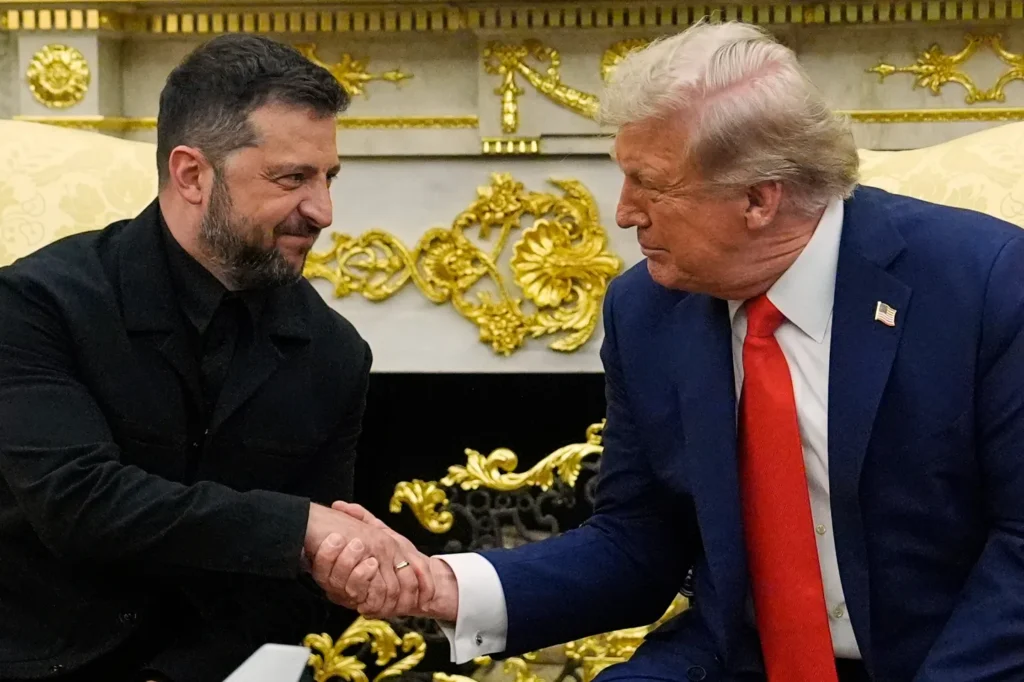U.S. President Donald Trump has announced plans to arrange a direct meeting between Russian President Vladimir Putin and Ukrainian President Volodymyr Zelenskyy, followed by a trilateral summit including Trump himself. This development, if realized, could mark a significant diplomatic effort in the ongoing conflict between Russia and Ukraine.
Trump’s Proposal
Trump described the initiative as a personal effort to bring the two leaders together for face-to-face negotiations, with the goal of exploring pathways to peace. According to Trump, the proposed meetings would allow for direct dialogue, bypassing traditional diplomatic channels that have so far struggled to produce substantive breakthroughs.
The plan envisions an initial bilateral meeting between Putin and Zelenskyy, aimed at addressing core issues such as territorial disputes, security guarantees, and ceasefire agreements. Following this, Trump would join both leaders for a trilateral summit intended to facilitate further discussion and provide a platform for potential agreement.
Potential Significance
A direct meeting between Putin and Zelenskyy would be unprecedented since the escalation of the Russia-Ukraine conflict. Analysts suggest that personal diplomacy could create opportunities for compromise that have eluded conventional negotiations. Trump’s involvement could add a high-profile mediating presence, though it also raises questions about the role of former leaders in international diplomacy.
Experts caution that such a meeting would face significant logistical and political hurdles. Ensuring the safety of all participants, agreeing on neutral ground, and aligning the agenda would be complex tasks. Additionally, the leaders’ past statements and entrenched positions may challenge the possibility of achieving meaningful results.
Reactions and Controversy
Trump’s announcement has generated a range of reactions in political and diplomatic circles. Supporters view it as a bold initiative that could help bring an end to the war. Critics argue that a former president acting independently on the international stage risks undermining official U.S. foreign policy and could create confusion in diplomatic channels.
The Ukrainian and Russian governments have not yet confirmed their willingness to participate. Observers note that even discussions about such high-level meetings can carry significant symbolic weight, influencing both domestic and international perceptions of the conflict.
Historical Context
Direct summits between conflicting leaders are rare but not without precedent. Past face-to-face meetings, such as those during the Cold War or in Middle East peace efforts, have sometimes led to breakthroughs, though results are often contingent on sustained follow-up negotiations and broader geopolitical support. Trump’s proposal fits into this historical context of unconventional diplomacy aiming to achieve rapid results.
Conclusion
Trump’s announcement of a proposed summit between Putin, Zelenskyy, and himself represents a dramatic and unconventional diplomatic initiative. While the feasibility and potential outcomes remain uncertain, the plan underscores the persistent international desire to find a resolution to the ongoing Russia-Ukraine conflict. How the parties respond—and whether such a meeting can actually be arranged—will be closely watched by governments, analysts, and the public around the world.



